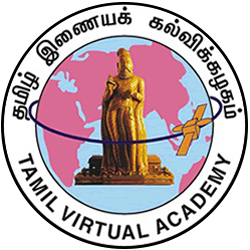Primary tabs
Lesson - 1
A05111 Classification of Languages
This lesson traces the origin of language. It discusses the various classification and types of language with specific reference to Tamil. It talks about the differences between oral and written language. The lesson also briefly touches on the classification of language as mother tongue, foreign language, body language and functional language.
Language was born as a result of man’s urge to communicate. There has never been one universal language. People from different parts of the world speak different languages. Hence, language is often regarded as a mark of one’s cultural identity.
Language is broadly classified into oral and written language. All languages were originally oral in form. The written script, which is a symbolic or ideographic representation of the spoken, evolved later. It is interesting to note that some languages still do not have a written script. Written language is also referred to as literary language. Literature nurtures and strengthens a language. This is especially true of Tamil which has a wealth of literature written since time immemorial. The earliest example of a Tamil Grammar book defining the rules governing the structure and function of language is “Tholkappiam”.
Language is also classified on the basis of its structure as Syllabic language ie (Asaimozhi) and Agglutinative language ie (Ottumozhi). Apart from this language is categorized as mother tongue, foreign language, official language and functional language. Communication is also possible through facial expressions and gestures. This is called body language.


